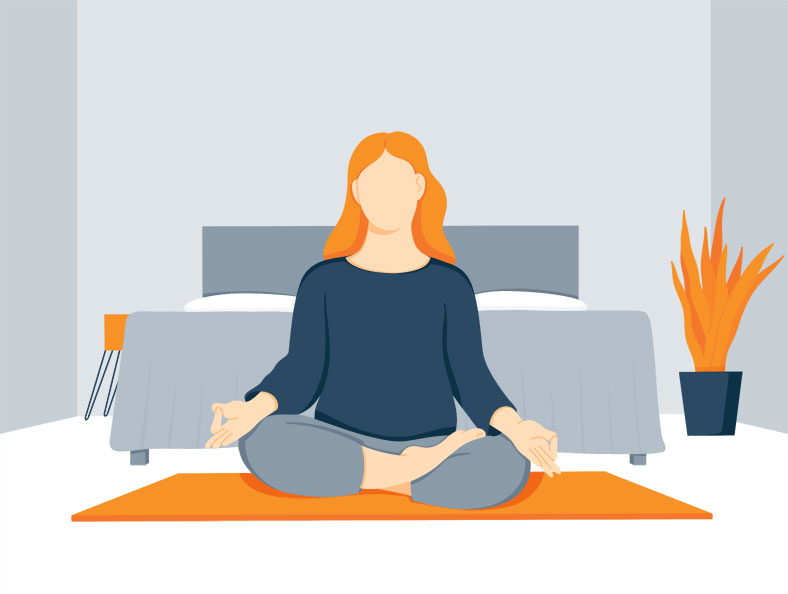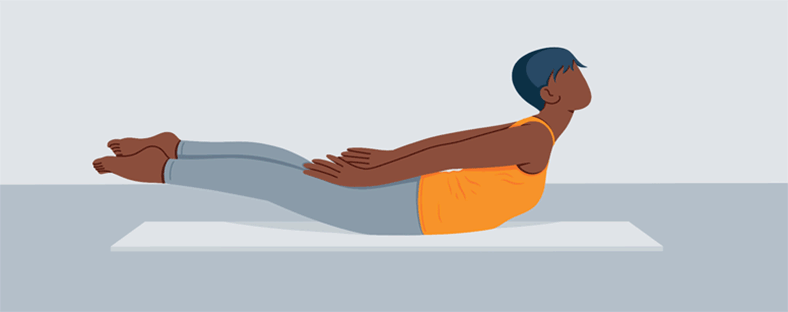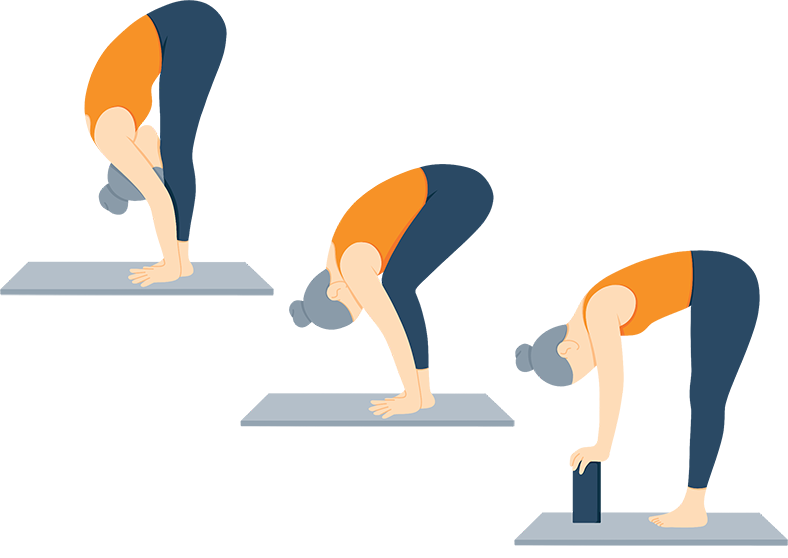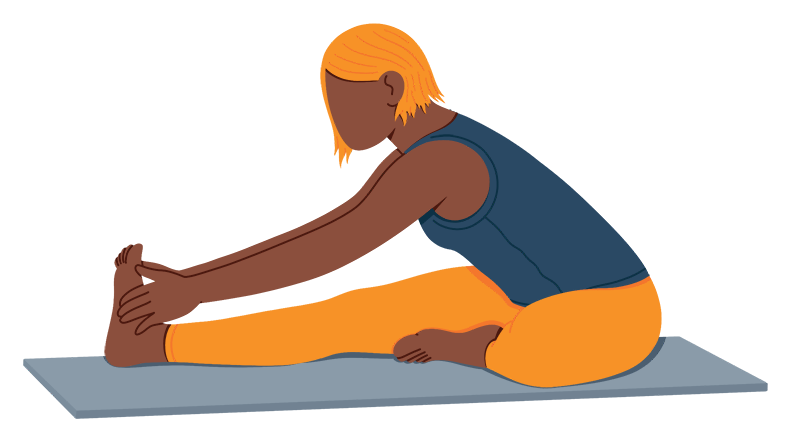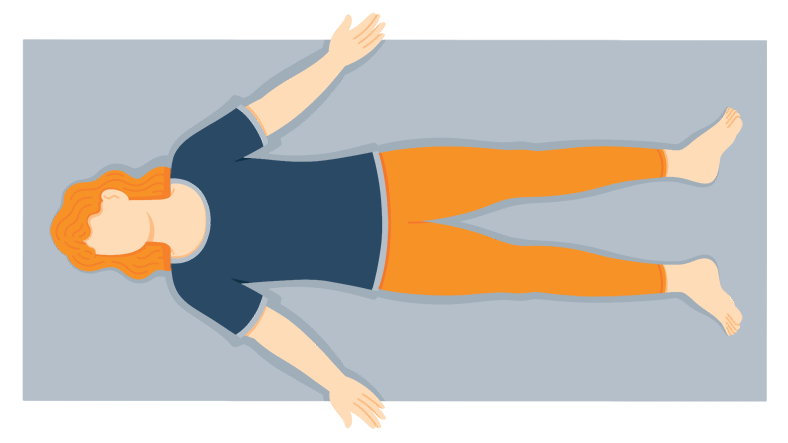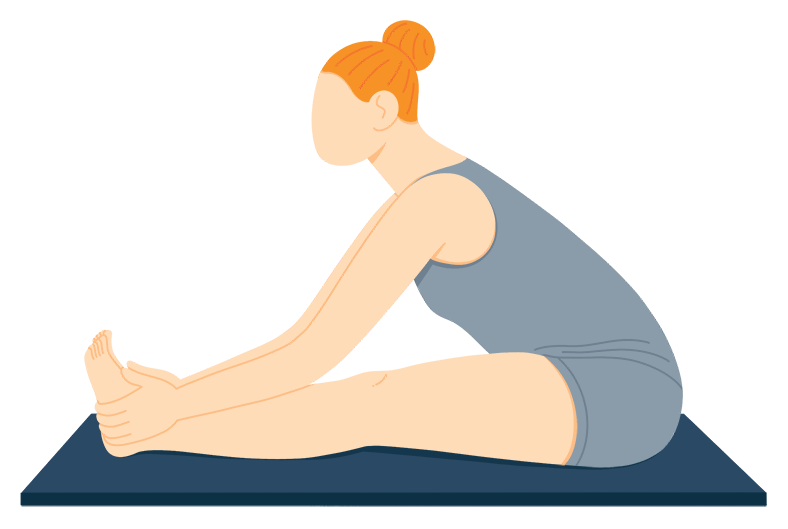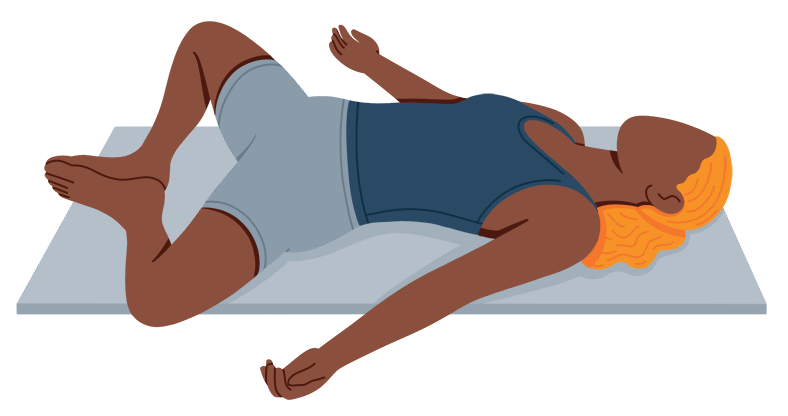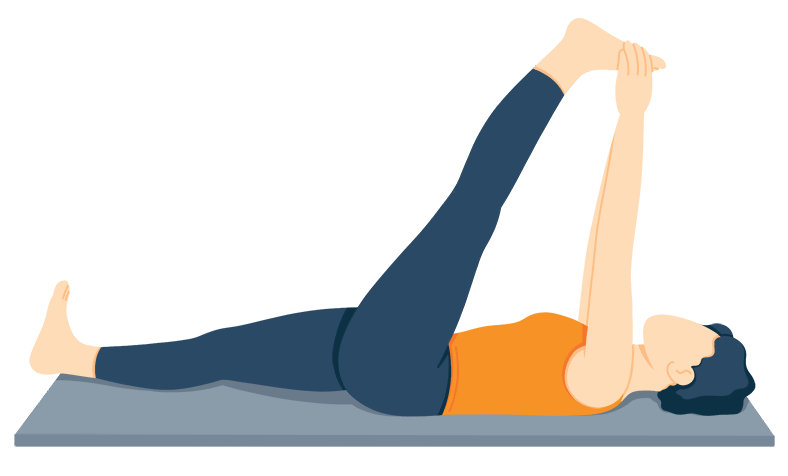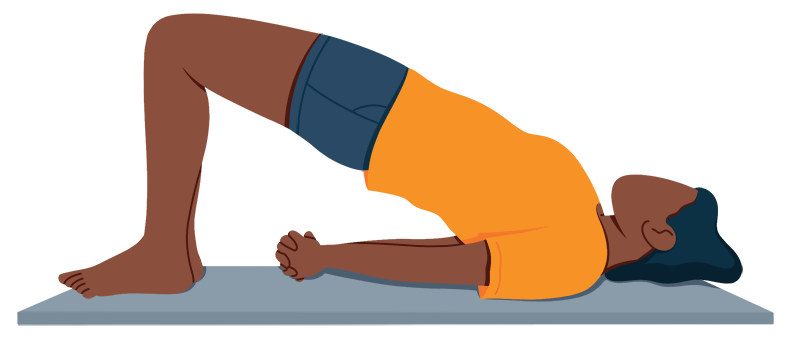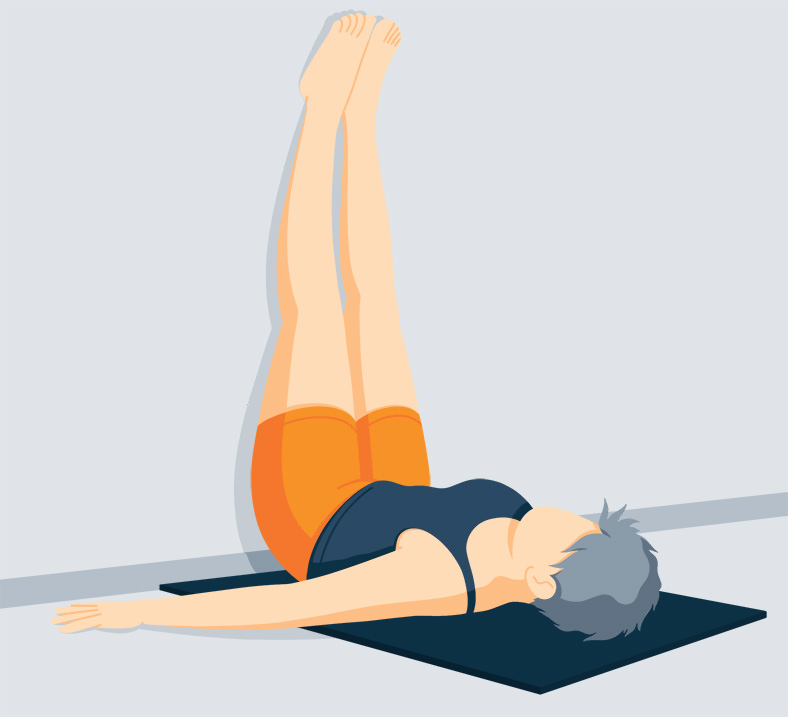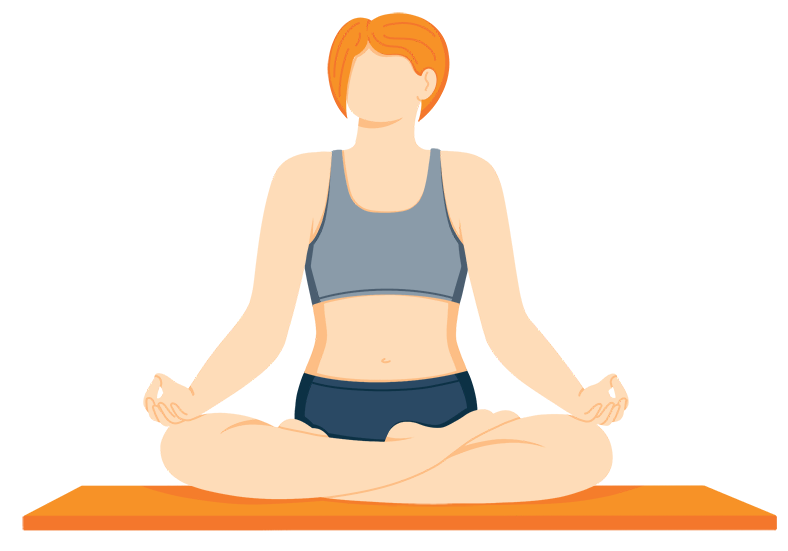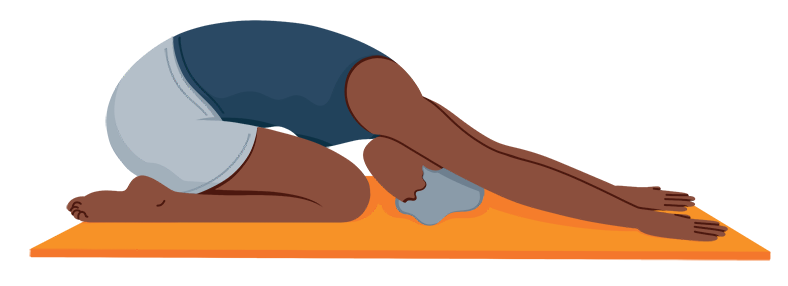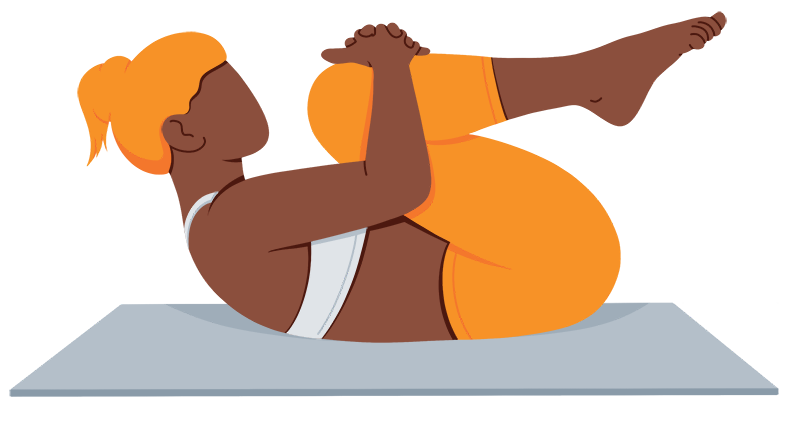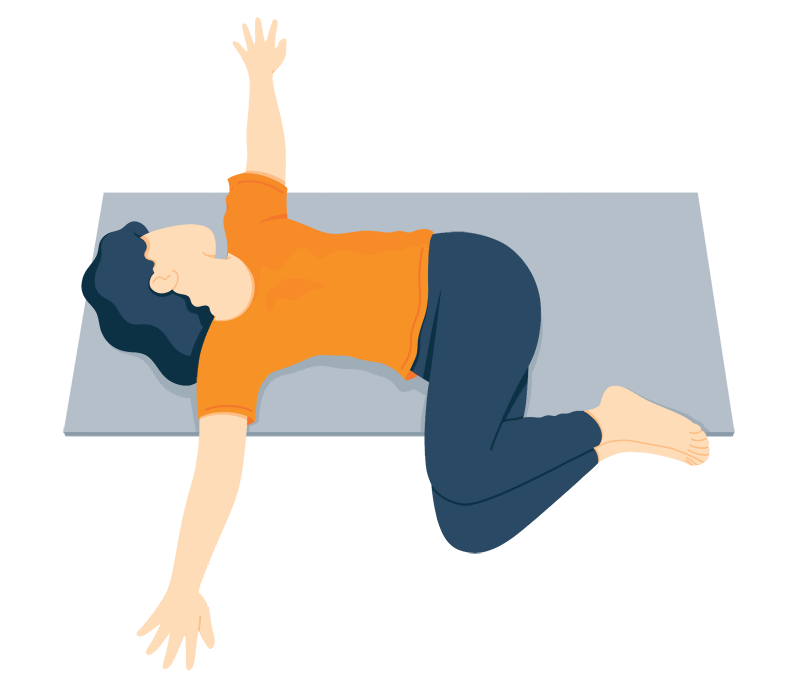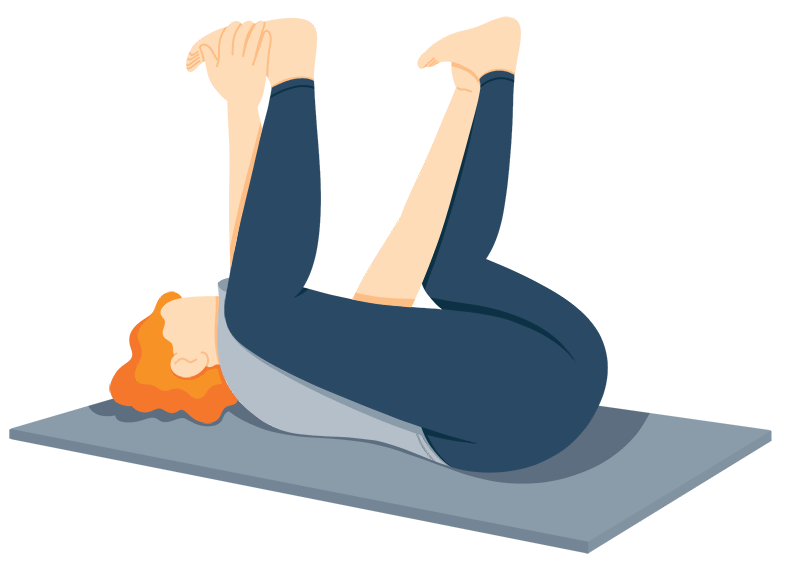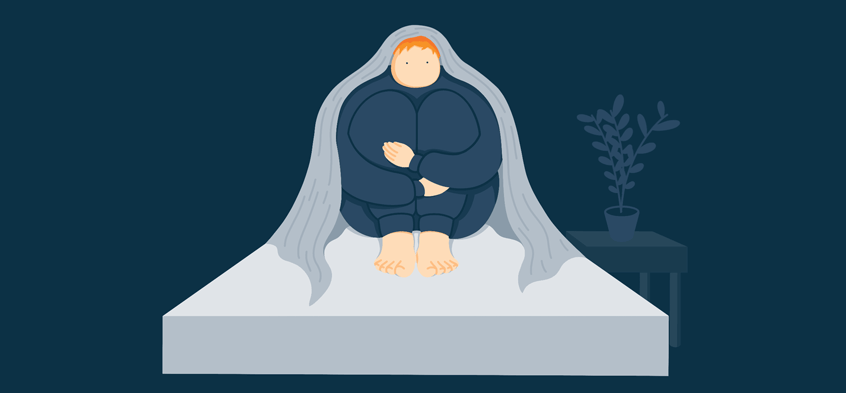Yoga is known for a variety of health benefits, but some might say Yoga’s central focus is mindfulness – noticing the present moment– and the breath. By focusing on the present and slowing your breathing, you may find that sleep comes more naturally.
That’s why we thought it would be helpful to share our favorite beginner yoga positions for sleep that could help you relax faster and enjoy a restful night. Many of these positions are suitable for beginners, but please consult your doctor if you have any concerns about injury, and if a position causes pain, it’s best to move on to a less advanced pose.
Beginner Poses to Help You Sleep Better
1. Salabhasana (Locust Pose)
This pose stretches and strengthens your back.
- Lie down flat on your stomach with your arms straight down by your hips.
- Your forehead should be touching the floor or a yoga mat.
- On an exhale lift your head, chest, and legs off the ground.
If raising both legs at the same time is too challenging, lift one first. Then place it back on the ground and lift the other.
2. Uttanasana (Standing Forward Bend)
This yoga pose is a fancy way of saying, “touch your toes.”
- Stand with your feet together.
- Bend forward at the waist, and then touch your toes.
- You may need to bend your knees to get your hands to the ground.
If it is still impossible to touch your toes, don’t force the pose, bend as far as you can comfortably, and lean on a yoga block or a folded blanket. Not only will you feel a stretch in the back of your body, but you’ll also increase blood flow and oxygen to your brain. Research1 tells us that supplying the brain with oxygen in this way can help induce deep, restful sleep.
3. Janu Sirasana (Head-of-the-Knee Pose)
This yoga position is like a forward bend, but you stay seated. It’s a fantastic all-over stretch that helps the back of your legs, your arms, and your back. It also aids in digestion, which is helpful during sleep.
- To get started, sit down and extend one leg out in front of you.
- With the other leg, bend at the knee and place the bottom of your foot against your inner thigh.
- Sit tall with your arms straight up above your head.
- Then, slowly hinge your upper body forward and reach for your toes.
- Hold for 30 seconds, and then switch legs.
4. Savasana (Corpse Pose)
This one is a yogi favorite and is often the last position done during regular yoga practice. It’s meant to bookend the session and allow the work that the practitioner has done to set in. In our opinion, this is the ultimate sleep pose!
- Corpse pose is physically the easiest, but can be the most difficult to do mentally.
- You lie flat on your back with your legs straight out in front of you and your arms at your side.
- Let your feet relax and fall toward the side.
- The palms of your hands should be face up.
In this position, the idea is to clear your mind, though some instructors may guide you through yoga nidra2 meditation, where you focus on relaxing each part of your body from your toes up to your eyes.
Need more info? Check out our guide for meditation before sleep.
5. Paschimottanasana (Seated Forward Bend)
This is similar to Janu Sirasana (head-of-the-knee pose), except both legs are straight out in front of you.
- From your seated position, raise your arms straight up to stretch your back
- Then, lower them toward your feet.
- As you hold this position, each time you exhale, try to extend your reach a bit further, being mindful not to overstretch or injure yourself.
6. Supta Baddha Konasana (Reclining Bound Angle Pose)
- Begin by sitting with your legs straight out in front of you.
- Then draw your legs in with the soles of your feet touching each other.
- You should strive for your heels to be as close to your groin as possible.
- Your knees should be flat on the ground.
- Then, slowly lean back and let your elbows drop to the floor to support you.
- Keep lowering yourself until you are lying flat on your back.
- Your arms should be outstretched by your sides and lying flat also. (If it is impossible to lie back completely, place a few cushions on the yoga mat or floor to support your back while you are in the pose.)
- Hold this position, and breathe deeply for 30 seconds or up to one minute.
7. Supta Padangusthasana (Reclining Big Toe Pose)
- Lie flat on your back.
- Lift one leg straight in the air.
- Reach your arm (the same side as the leg that’s lifted) and grab your big toe.
- Make sure your back is flat on the floor without any gaps or spaces.
- Hold for five breaths and then switch sides.
8. Setu Bandha Sarvangasana (Bridge Pose)
- Lie on your back with your feet hip-width distance apart.
- Draw your heels to your buttocks and keep your feet flat on the floor.
- Lift your tailbone up toward the sky.
- Interlace your fingers underneath you as you press your shoulders deeper into the ground.
9. Viparita Karani (Legs-up-the-Wall Pose)
If you’re on your feet all day or you have varicose veins, this relaxing pose will be your new favorite! This sort of inverted pose (where your heart is lower than your feet) can improve circulation3 and induce a state of immediate relaxation.
- Lie on your back with your feet facing a wall.
- Lift your legs up the wall and start inching your buttocks toward it until they’re touching, and your legs are straight up against it.
- Hold for one minute.
10. Sukhasana (Easy Pose)
The easy pose is often what people imagine when they hear “meditation” or “mindfulness.” Sukhasana is great for breathing exercises as it doesn’t require much effort or practice to maintain.
- Sit down on your mat, folding your legs in front of you by lifting one foot to rest on the opposite thigh. (This should provide a gentle hip stretch.) If you are unable to fold your legs or feel strain in the knees, sitting “criss-cross” style is also acceptable.
- Lift up through the spine, lengthening through your neck as you inhale.
- Exhale to lower your shoulders and rest your hands on your knees.
Restorative Yoga Poses if You Cannot Sleep
1. Balasana (Child’s Pose)
- Start on all fours with knees wide apart.
- Drop your buttocks to touch your heels and stretch your arms straight down in front of you on the floor.
- Your forehead should move toward the ground or your mat. If your head cannot touch the ground, fold your hands one over the other and rest your head there.
- Another option would be to use a folded towel or firm pillow to bring the floor closer to you.
- Focus on your breath. As you inhale, your body will rise. On your exhale, it will fall.
Child’s Pose is grounding, relaxing and an ideal pose for better sleep. It stretches the low back and hips, which are common areas we store stress4 according to various Eastern practitioners5 and, increasingly, Western science. If you’re having a stressful day at the office, this is also an ideal position to try.
2. Pawanmuktasana (Wind-Relieving Pose)
You can probably imagine why this position is referred to as wind-relieving. If you haven’t guessed yet, try it, and you may find out!
- Lie flat on your back.
- Lift one leg, bend it, and hug your knee toward your chest.
- Hold for 30 seconds to one minute, and then switch sides.
3. Supta Jathara Parivartanasana (Supine Spinal Twist)
- From a wind-relieving pose, take your bent leg and ease it down to the floor on the opposite side. So, if your right knee is bent, drop it to the left side of your body. If this causes strain, you can keep your knees stacked and drop them both to the side.
- Turn your neck so that your eyes are also facing to the left.
- Then, take your right arm and stretch it straight out to the right side. Your shoulder should remain flat on the ground.
- Hold for a count of five breaths, and then switch sides.
4. Anana Balasana (Happy Baby)
This pose was named for the way babies grab their toes while lying on their backs. After you finish the supine spinal twist, raise both legs in the air and wrap your middle and index finger around your big toes. An optional activity is to rock side by side, which stimulates oxygen flow in the kidneys. This is thought to have an impact on the adrenal glands6– which is what controls your stress response.
Benefits of Yoga Before Bed
Loosens up Tight Muscles
One of the main physical components of yoga is stretching. If you have tight muscles from sitting at your desk or exerting yourself, practicing yoga before bed could help relieve muscle tension, prevent injury, avoid waking up stiff or sore, and enable you to get a good night’s sleep, so long as you don’t overdo it.
Promotes Deep Relaxation
It can be challenging to wind down at the end of a long, stressful day. By practicing yoga postures and working on slow and conscious breathing techniques,you may find that with time, you naturally relax throughout your yoga practice, which could help lessen bedtime anxiety7.
Burns Excess Energy
If you feel fidgety or restless at the end of the day, a gentle yoga practice can help make you feel centered. The subtle movements and moderate physical activity could burn your last bit of anxious energy and prepare you for a night of sleep, without energizing you more like an intense workout would.
Learn More: How Exercise Affects Sleep
Can Improve Insomnia
If you have trouble falling asleep, bedtime yoga is a great option for treating insomnia8. The breathing exercises are relaxing and many of the postures are designed to improve circulation, sleep quality, and release tightness in your body. If you are having trouble with insomnia, take a look at our list of best mattresses for insomnia.
Common Questions About Bedtime Yoga:
Can Yoga Help People with Sleep Disorders?
Yoga is a great activity for people with most sleep disorders. While yoga may not cure each sleep disorder, it could help alleviate nighttime anxiety that comes with insomnia and worry about falling asleep8. By focusing on your breath and doing purposeful movements, you’ll find that you feel much more relaxed and ready for bed when it’s time for sleep.
Which Yoga is Best for Sleeping?
The types of yoga that are best for sleep are going to be any that focus on both slowing the body down and mindfulness. This word is thrown around a lot these days, so for our purposes, we’ll define it as “a practice of focusing on the present moment.”
Yoga Nidra9 is a great option to do right before bed, because this practice is all about focusing on the breath and calming, restorative postures that are either seated or lying down.
Are There Yoga Poses I Can Do in Bed?
If you can’t get to sleep and don’t want to get up, there are some yoga postures you can do from the comfort of your bed. These include: Child’s Pose, Happy Baby, Seated Forward Fold, Supine Spinal Twist, or Legs up the Wall (Headboard.)
Of course if you have a very soft bed, some of these poses will feel better on your yoga mat on the floor. If you do stay in bed, be sure to remove the pillow from beneath your head to keep your spine properly aligned in these poses.
What is Yoga Nidra?
Yoga Nidra is a type of yoga that doesn’t involve asanas, or poses. Instead, this mindfulness practice involves lying down, focusing on the breath, and scanning the body to move into a state of deep relaxation.
According to Cleveland Clinic, the deep relaxation created by Yoga Nidra activates the pineal gland and can actually produce more melatonin, which we know as the “sleep hormone.”9 Additionally, research10 shows that Yoga Nidra is more effective than seated meditation at reducing anxiety.

Katie Harris
Content Writer
About Author
Katie writes content at Sleep Advisor, where she has finally found people who appreciate her true passion for sleep. Based in Austin, Texas, she graduated with a degree in Communications and enjoys combining creativity with research to improve the world’s sleep, starting with her sleepwalking husband.
Combination Sleeper
References
- University of Alberta. “Resting easy: Oxygen promotes deep, restorative sleep: Neuroscientists point to potential for oxygen therapy for disrupted sleep”. ScienceDaily. https://www.sciencedaily.com/releases/2018/12/181212134432.htm. 2018.
- Datta, Karuna.,Tripathi, Manjari., Mallick, Hruda Nanda. “Yoga Nidra: An innovative approach for management of chronic insomnia- A case report”. Sleep Science and Practice. https://sleep.biomedcentral.com/articles/10.1186/s41606-017-0009-4. 2017.
- “The Yoga Pose You Need: The Health Benefits of Legs Up the Wall”. Cleveland Clinic. https://health.clevelandclinic.org/benefits-of-legs-up-the-wall/. 2021.
- Volynets, S., Glerean, E., et al. “Bodily maps of emotions are culturally universal”. APA PsycNet. https://psycnet.apa.org/record/2019-35651-001. 2020.
- Lee, Y.S., Ryu, Y., et al. “Understanding Mind-Body Interaction from the Perspective of East Asian Medicine”. National Library of Medicine. https://www.ncbi.nlm.nih.gov/pmc/articles/PMC5585554/. 2017.
- Bartter, F.C., Delea, C., et al. “The adrenal cortex and the kidney”. ScienceDirect. https://www.sciencedirect.com/science/article/pii/S0085253815313831. 2015.
- Woodyard, C. “Exploring the therapeutic effects of yoga and its ability to increase quality of life”. National Library of Medicine. https://www.ncbi.nlm.nih.gov/pmc/articles/PMC3193654/. 2011.
- Bankar, M.A., Chaudhari, S.K., Chaudhari, K.D. “Impact of long term Yoga practice on sleep quality and quality of life in the elderly”. National Library of Medicine. https://www.ncbi.nlm.nih.gov/pmc/articles/PMC3667430/. 2013.
- “What is Yoga Nidra?”. Cleveland Clinic. https://health.clevelandclinic.org/what-is-yoga-nidra/. 2020.
- Ferreira-Vorkapic, C., Borba-Pinheiro, CJ., et al. “The Impact of Yoga Nidra and Seated Meditation on the Mental Health of College Professors”. National Library of Medicine. https://www.ncbi.nlm.nih.gov/pmc/articles/PMC6134749/. 2018.

